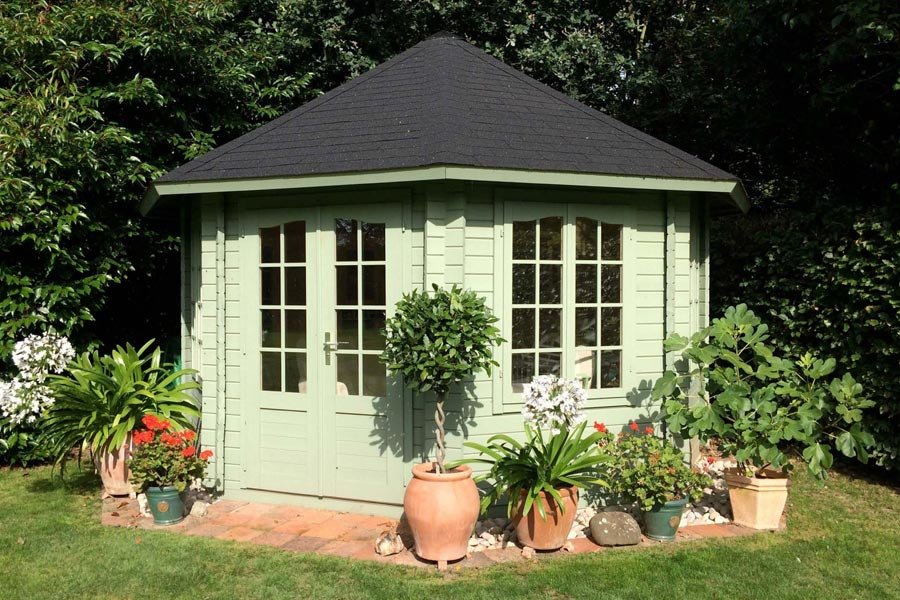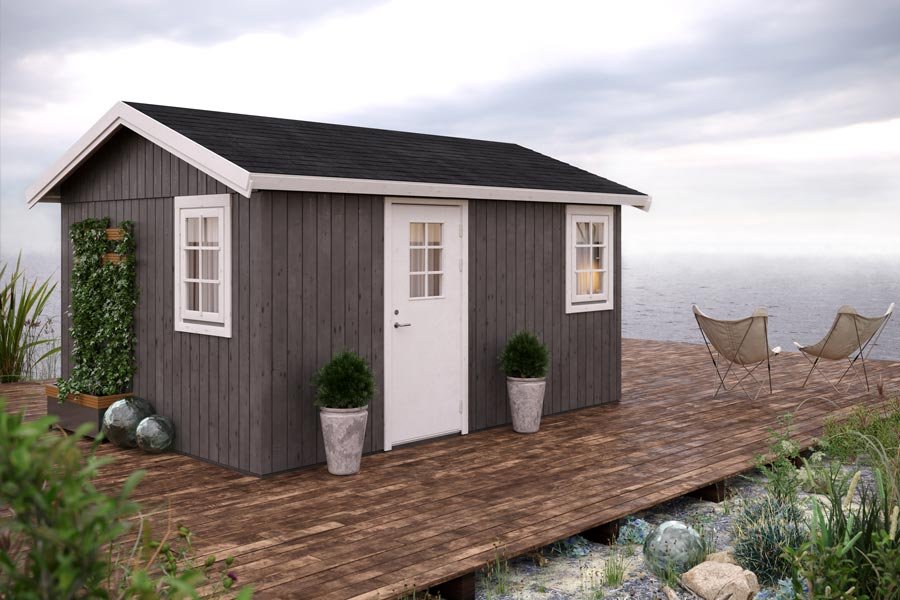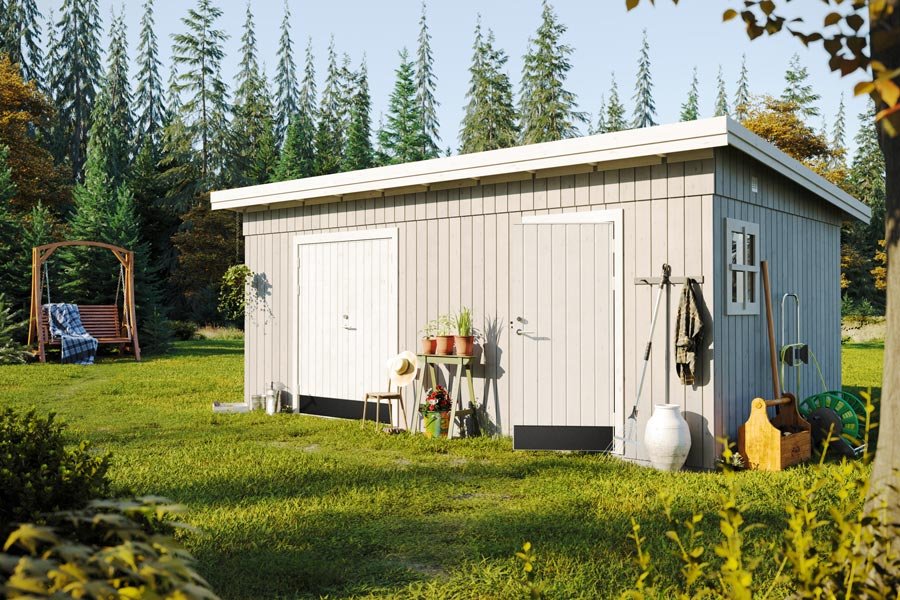If you plan to work in a summerhouse, or enjoy it in winter, you need to think about warmth – ideally before buying anything. As we touched on in a blog post last month, the first step is to choose a garden building with double glazing and timber walls at least 44mm thick. These summerhouses and garden buildings are designed for year-round use, and are far removed from the chilly, draughty summerhouses of times past. It’s also possible to add extra roof or floor insulation when you construct the cabin.
But what if you already have a summerhouse, garden room or timber office, and you’ve been finding it a bit chilly this winter and spring? What can you do about it?
Use floor and wall coverings
If you work in a garden building, your feet will probably feel the cold first. Rugs on the floor will make a huge difference, particularly if they have some wool content. An underlay will add an extra layer of warmth, and also help to stop the rug slipping. Don’t just consider a wool rug for the floor either, wall hangings also help keep out draughts and are useful if your wall timber is less than 44mm thick.
Make the room ‘feel’ warmer
As well as physically keeping out the cold, wall and floor rugs give a warmer ‘feel’ to a summerhouse. Whilst this psychological effect may not be sufficient to keep you warm all day, it does influence how other people react to a room. If you invite them for drinks in a cosy garden room with rugs, candles and rich colours such as gold, orange, red and burgundy, they’ll probably feel warmer than if they’re standing around in a bare room with minimal colour and a few bits of summer furniture.
Combine insulation with a style statement
Rugs, wall hangings and throws are also the easiest way to import different design styles to a garden room. Kilims and Berber rugs are a simple way to add rich, Moroccan-or Ottoman-style jewel colours, and you can easily create a ‘souk’ feel with pillows, cushions, low furniture, and lamps or lanterns with octagonal or keyhole shapes.
Equally simple, you could pursue a Scandinavian vibe by using whites, neutrals and cool blues and greys for the floor, rugs and walls. Natural-looking materials such as sisal, leather, driftwood, linen, and fake fur add to the Nordic feel, and can also boost insulation and warmth. A few splashes of bright colour will complete the Scandinavian look and warm up cooler blue tones.
If you want some design inspiration for these and other design styles, websites such as Pinterest will throw up some excellent ideas.
Think about heating
If you have electricity in your cabin, then you can use an electric convection heater or radiator to keep off the chill. Electric oil-filled radiators retain heat very well, and stay warm for a good while after being turned off, so can be cost-effective.
Gas heaters run on propane and are useful if you don’t have electricity in your summerhouse. You’ll need to source a local supplier to collect gas bottles from (or have them delivered if that’s an option), and you’ll need somewhere to store them. Proper ventilation is important if you’re using a gas heater too.
But how does a gas heater tie in with summerhouse interior design? Well these days you can get ultra modern gas heaters that would fit with the Scandinavian style, or you could buy a gas fire styled on a wood burning stove – there are now several manufacturers offering this.
When choosing which type of heater to buy, think about the following:
- Do you want a free-standing or wall mounted heater? Oil-filled radiators tend to be free-standing, so are flexible, but use up more floor space than a wall-mounted electric radiator or convention heater. Gas heaters often have wheels, so if you need to be able to move the fire around your garden building this would be ideal.
- Will you use the cabin as a workroom or craft area? If you’re using flammable materials or creating large amounts of sawdust, then you need to be wary of using heaters with an exposed heating element.
N.B. We’ve added a more detailed post just about heating options for a garden room with much more information on different heaters and their pros and cons.
Eliminate the draughts
When deciding where to put rugs, hangings and draught excluders, you can maximise your insulation success by identifying exactly where draughts are coming from. The worst gaps will be obvious, but others maybe less so. Enter the thermal leak detector – a handy gadget for finding out where you’re losing heat. A quick search online should yield some cost effective results, and you can use a thermal leak detector in your house as well as in your garden room, and the cost of the gadget will probably be covered by what you save on heat loss and heating bills.
So if you’re sat inside this winter or spring wishing that you could be making more of your summerhouse, hopefully these interior design ideas and our previous insulation suggestions will help you get more out of your timber garden building this year.
















